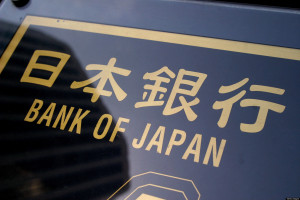The Bank of Japan on Thursday fired a warning shot to markets by offering to buy unlimited bonds for the first time under a revamped policy framework, as domestic debt yields surged in the wake of Donald Trump’s upset U.S. election victory.
BOJ Governor Haruhiko Kuroda said the central bank will not stand idly by as Japanese government bond yields jumped in sympathy with moves in U.S. Treasuries, taking the challenge to markets as policy makers tried to keep borrowing costs low to spur stubbornly low inflation.
The BOJ offered to buy an unlimited amount of bonds at minus 0.04 percent in the five-year JGB notes and minus 0.09 percent in the two-year paper, employing a method the bank unveiled in September to achieve its new policy to control the entire yield curve, rather than just short-term interest rates.
The market’s response was quick, with the five-year JGB yield falling back to minus 0.095 percent from minus 0.065 percent. The two-year yield fell to minus 0.150 percent, down 4.0 basis points on the day.
The BOJ’s bond-buy offer attracted no bids as market players can sell them at a lower yield, or a higher price, in the market.
“They offered to buy at yields above the market’s levels. So this was aimed more at containing rise in yields rather than pushing them down,” said Naoya Oshikubo, yen rates strategist at Barclays.
Ten-year JGB futures rose as much as 0.40 point following the BOJ’s operation, the biggest gain since the BOJ started the “yield curve control” policy.
The BOJ’s move followed rising expectations of reflationary policies under a Trump administration that sank Treasuries and sent JGB yields above the rough targets the BOJ set in September.
The short-term bond yields have risen sharply in particular.
The five-year yield hit a nine-month high of minus 0.04 percent on Wednesday, about 17 basis points above its levels just before the BOJ’s September and November meetings.
Announcing the policy revamp in September after years of massive money printing failed to spur sustainable growth and stoke inflation, the BOJ said in order to control JGB yields it would buy bonds at a fixed rate if needed and set an explicit target of “around zero percent” for the 10-year yield.
“Because the BOJ now fired a shot, people have probably realized that they don’t need to do panic-selling,” said Koichi Sugisaki, vice president of research at Morgan Stanley MUFG Securities.
A Bank of Japan official told Reuters on Thursday the BOJ undertook those operations following a rise in short- and medium-term bond yields.
Kuroda told the upper house financial affairs committee that the BOJ was read to fight off unhelpful market moves.
“Moves in Treasuries do have an impact on Japanese bond yields,” he said.
“That does not mean we have to automatically accept gains in Japanese bond yields every time Treasury yields rise.”
Still, the Japanese bond market remained shaky with many investors rattled by the unexpected losses after the selloff in U.S. and other sovereign bonds.
The auction of 20-year JGBs on Thursday highlighted limited appetite for bonds. The tail, or the gap between the lowest and the average price, was 0.40, the widest in seven months, pointing to investor caution given uncertainty over the outlook for Treasuries.

